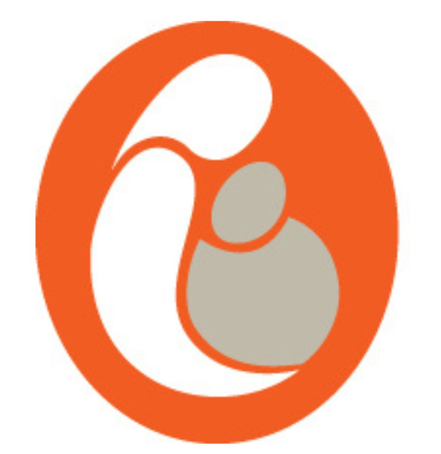Reference materials
The NPEC reference materials contains full details of the NPEC methodology, including:
Methods
Data collection and management
There are 19 maternity units in Ireland. Within each maternity, unit coordinators with the responsibility of submitting perinatal mortality data to the NPEC have been identified. Pseudonymised data on perinatal deaths from births that occurred between January 1st and December 31st of the reporting year are submitted to the NPEC by all 19 units using a standardised notification dataset electronically, via the secure online NPEC database. The perinatal mortality notification form/dataset is available on the NPEC website . This perinatal mortality notification dataset is completed using data on fetal and maternal characteristics recorded in the clinical records. Implemented nationally in 2011, the NPEC notification dataset was based on the validated Centre for Maternal and Child Enquiries (CMACE) Perinatal Death Notification Form1 and has been endorsed by the Clinical Advisory Group at the Institute of Obstetrics and Gynaecology, the Faculty of Paediatrics and the HSE National Obstetric Programme Working Group.
Figure III illustrates the NPEC data collection and management processes. All data is validated directly with the respective maternity units. Further, the NPEC also undertakes extensive reconciliation of its annual perinatal mortality dataset with that of the National Perinatal Reporting System which collates comprehensive birth registration information across the country. This comparison ensures accuracy and completeness by aligning the NPEC data with the official records maintained by the National Perinatal Reporting System. This process enhances the overall reliability of the both the NPEC and National Perinatal Reporting System datasets.
| Image | Description |
|---|---|
| Stillbirth or neonatal death occurs | |
| Maternity unit completes NPEC Perinatal Mortality notification dataset. Unit coordinator submits data to the NPEC with possible contribution from midwives, obstetricians, neonatal nurses, neonatologists, and pathologists. |
|
| NPEC data manager reviews and validates all data with the unit coordinators. Consolidation of the NPEC data with the National Reporting System national dataset. Data cleaning and validation. |
|
| Data analysis and report writing. Review and endorsement of the report by the Perinatal Mortality National Clinical Audit Governance Committee. |
|
| The Chief Clinical Officer within the HSE, National Women and Infants Health Programme (NWIHP), the National Centre for Clinical Audit (NCCA) and the Department of Health are briefed on the report and recommendations. | |
| Dissemination of unit specific reports to all maternity units and health regions. Dissemination of the national report to various stakeholders and the public. |
Rate calculations
To assess perinatal mortality, overall and unit-specific perinatal mortality rates per 1,000 total births and corresponding 95% confidence intervals were derived. For incidence rates, 95% confidence intervals were calculated using exact Poisson confidence limits unless stated otherwise. Stillbirth, neonatal and corrected perinatal mortality rates, which exclude deaths due to a major congenital anomaly, were also calculated. The “Extended perinatal mortality rate” was also calculated, which includes stillbirths, early neonatal deaths and late neonatal deaths.
Total births was the denominator used for all the perinatal mortality rates except for early neonatal deaths which use total live births (i.e. total births minus stillbirths). Denominator data were provided directly by the Irish Health Pricing Office2.
Perinatal deaths are included in a maternity unit’s rate if the baby was delivered in the maternity unit or if the unit was the intended place of delivery, but the baby was born before arrival. In the event of a neonatal death, the perinatal death is assigned to the maternity unit where the baby was delivered regardless of where the baby died (includes post-natal transfers to tertiary maternity units/paediatric centres).
The 2023 birth cohort
Perinatal deaths following termination of pregnancy are excluded from the perinatal mortality rate and most findings in this annual report 2023. The Perinatal Mortality National Clinical Audit in Ireland Annual Report 2023 describes the perinatal deaths that occurred among infants born from 1 January to 31 December 2023. Thus, neonatal deaths in January 2023 of infants born in December 2022 are not included while neonatal deaths in January 2024 of infants born in December 2023 are included. The NPEC have been reporting on the perinatal mortality for a birth cohort since the 2015 perinatal mortality report. This method of reporting perinatal mortality for a birth cohort allows more accurate estimates of mortality rates to be produced as appropriate denominators are available. The MBRRACE-UK Perinatal Mortality Surveillance Reports are also based on perinatal mortality for a birth cohort3 . The NPEC Perinatal Mortality Reports for the years 2011-2014 were based on deaths in a calendar year; therefore, they were revised and adjusted to meet the birth cohort definition.
Interpretating rate ratios and funnel plots
To access information on interpreting rate ratios and funnel plots, click here
The National Perinatal Epidemiology Centre’s (NPEC) maternal and fetal classification system
The NPEC data collection form requests contributors to identify maternal, fetal and neonatal conditions, using specific categories, which caused or were associated with the death. Unit contributors are also requested to assign the principal cause of death with reference to the postmortem and placental pathology, if performed. Guidance and definitions for completing specific categories are provided to units in the National Perinatal Epidemiology Centre’s (NPEC) maternal and fetal classification system
Briefly described; categories include both pathophysiological entities and clinical conditions present at time of death including congenital fetal anomaly, placental pathology and Intra-Uterine Growth Restriction. Classification of stillbirths were made using the NPEC maternal and fetal classification system. In the case of neonatal deaths, the NPEC neonatal classification system was used to attribute the main neonatal cause of death and the NPEC maternal and fetal classification system was used to identify the underlying obstetric condition/sentinel event associated with the death.
Definitions and terminology
Termination of pregnancy; termination of pregnancy, legalised in Ireland from 2019, refers to all cases where the pregnancy is medically ended, with the expected outcome of fetal or early neonatal death, in either of the following events: when there is a risk to the life, or of serious harm to the health, of the pregnant woman and for a condition likely to lead to death of fetus either before or within 28 days of birth. Since the Perinatal Mortality National Clinical Audit in Ireland Annual Report 2022, most findings are based on perinatal deaths excluding cases following termination of pregnancy, which is in keeping with international practice
Stillbirth: For the reporting year 2023 the NPEC applies a definition of stillbirth in accordance with the Stillbirths Registration Act, 1994, Section 7 and Civil Registration Act, 2004: Section 28, which specifies stillbirth as a child born weighing 500 grammes or more or having a gestational age of 24 weeks or more who shows no sign of life. In previous reports, we considered delivery ≥24 gestational weeks to be coterminous with having a gestational age of 24 weeks or more. However, cases of fetus papyraceous, where one of the twin fetuses died early in development, were not included as stillbirths. From 2016, cases of intrauterine death diagnosed before 24 gestational weeks with a birthweight <500g are not considered to have reached a gestational age of 24 weeks or more and thus are not included as stillbirths in this clinical audit.
Early neonatal death: Death of a live born baby occurring within 7 completed days of birth.
Late neonatal death: Death of a live born baby occurring after the 7th day and within 28 completed days of birth.
Live birth: Live birth refers to the complete expulsion or extraction from its mother of a product of conception, irrespective of the duration of the pregnancy, which, after such
separation, breathes or shows any other evidence of life - e.g. beating of the heart, pulsation of the umbilical cord or definite movement of voluntary muscles - whether or not the umbilical cord has been cut or the placenta is attached. Each product of such a birth is considered live born.7
Total births: For the purpose of calculating perinatal mortality rates, the denominator used was the number of births (live birth and stillbirths) from 24 weeks gestation or birthweight >500g.
Stillbirth rate: Number of stillbirths per 1,000 total births (live births and stillbirths from 24 weeks gestation or weighing >500g). The reporting guideline used by the Irish Healthcare Pricing Office perinatal statistics report on stillbirths uses the criterion of birthweight >500g. For consistency, we also report the stillbirth rate using the criterion of birthweight >500g.
Neonatal death rate: Number of early neonatal deaths per 1,000 live births (from 24 weeks gestation or weighing >500g). The Irish Healthcare Pricing Office perinatal statistics report on early neonatal deaths with a birthweight >500g. For consistency, we also report the early neonatal death rate using the criterion of birthweight >500g.
Overall perinatal mortality rate: Number of stillbirths and early neonatal deaths per 1,000 total births (live births and stillbirths from 24 weeks gestation or weighing >500g). Again, for consistency with the Irish Healthcare Pricing Office reporting of perinatal statistics, we also report the neonatal death rate using the criterion of birthweight >500g. Late neonatal deaths are not included in the perinatal mortality rate.
Corrected perinatal mortality rate: Perinatal mortality rate excluding perinatal deaths associated with or due to a major congenital anomaly.
Extended perinatal mortality rate: Number of stillbirths, early neonatal deaths and late neonatal deaths per 1,000 total births (live births and stillbirths from 24 weeks gestation or weighing ≥500g).
Booking: Some data sought by the NPEC Perinatal Death Notification Form relate to the time of booking. Booking in this regard relates to the mother’s first antenatal visit at the maternity unit.
In-utero transfer: From January 2016, the NPEC Perinatal Death Notification Form contains a specific question on whether the obstetric care of the mother was transferred to another maternity unit with the fetus in-utero. The identity of the transferring unit and gestational age at time of in-utero transfer are also captured.
Parity: The number of completed pregnancies, whether live birth or stillbirth, of at least 24 weeks gestation or with a birthweight ≥500g. We refer to parity prior to the pregnancy that resulted in a perinatal loss in the reporting year.
Gravida: The number of times the mother has been pregnant, irrespective of duration. We refer to gravida prior to the pregnancy that resulted in a perinatal loss in the reporting year.
References
1. Centre for Maternal and Child Enquiries (CMACE) (2010) Perinatal Mortality 2008: United Kingdom. London: CMACE
2. Healthcare Pricing Office. Perinatal Statistics Report 2023. Dublin: Health Service Executive. [in press]
3. Draper ES, Gallimore ID, Kurinczuk JJ, Smith PW, Boby T, Smith LK, Manktelow BN, on behalf of the MBRRACE-UK Collaboration. MBRRACE-UK Perinatal Mortality Surveillance Report, UK Perinatal Deaths for births from January to December 2020. Leicester: The Infant Mortality and Morbidity Studies, Department of Health Sciences, University of Leicester. 2022.


